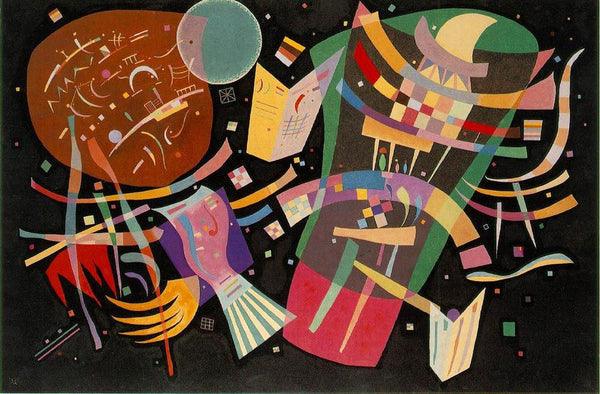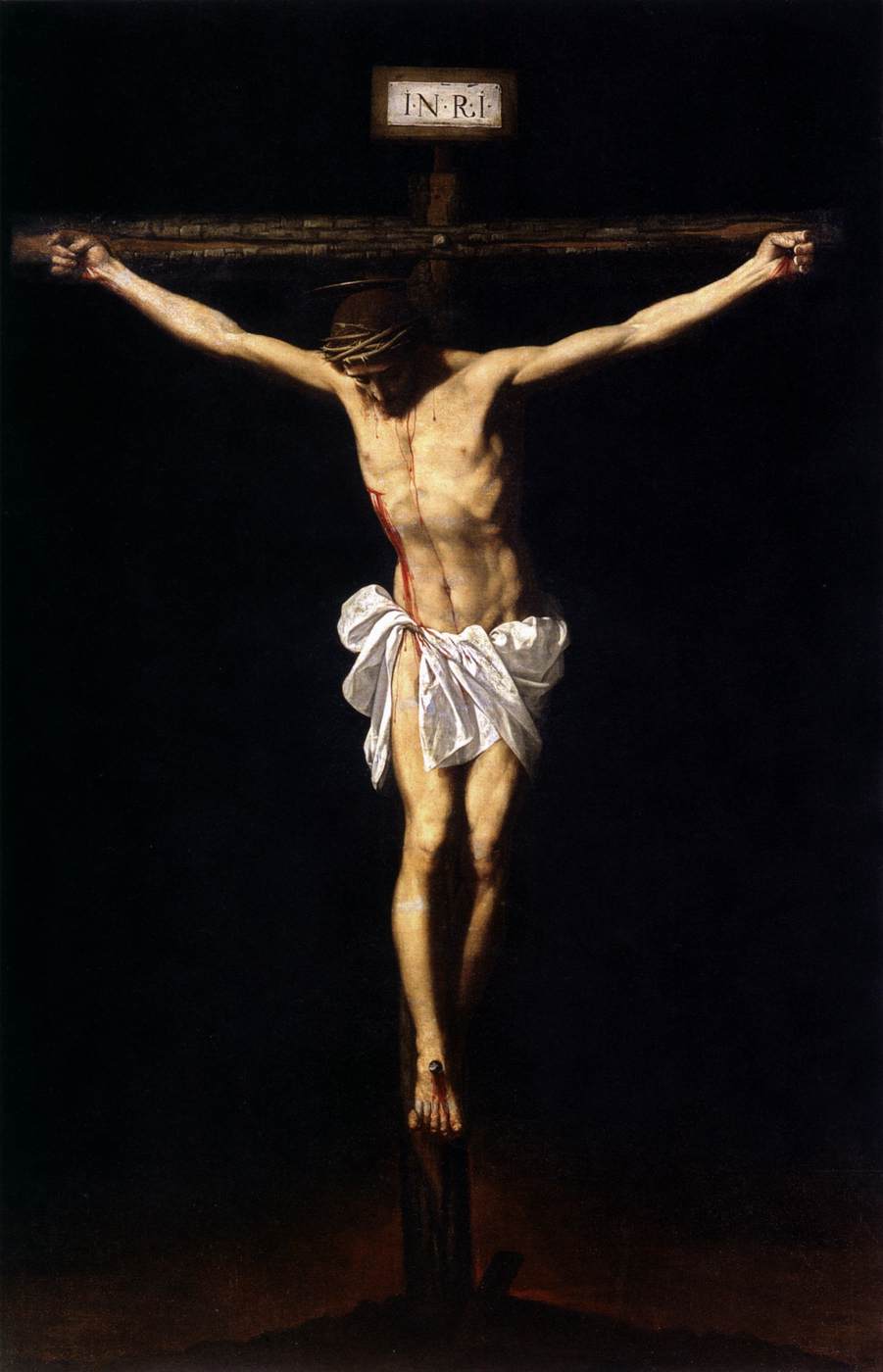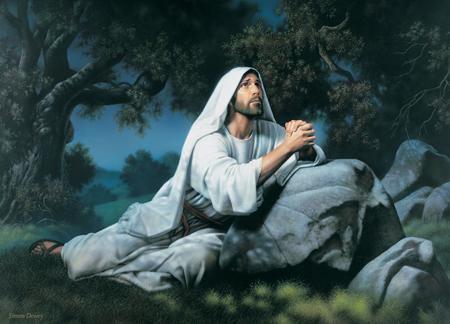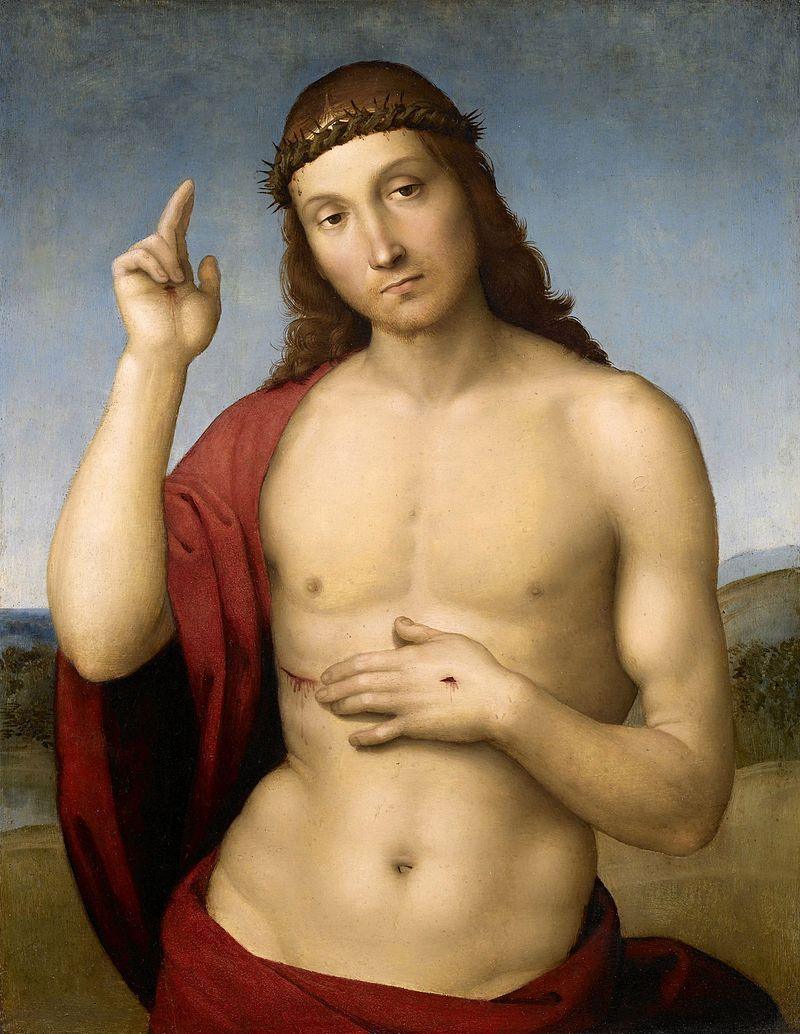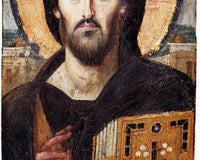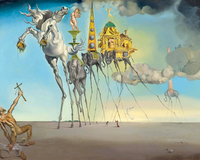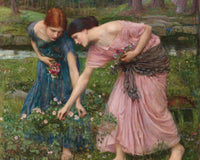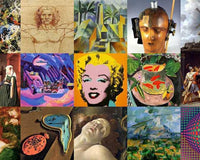What are the most famous abstract paintings in history? In this entry, we address that question and expand our collective knowledge about the fascinating abstract art.
Throughout the early 20th century, a great amount of famous abstract art was created, and most of these works of art are still mentioned today. When considering these examples of abstract art, certain artworks have managed to stand out and gain increasing popularity as time goes by.
While there are many more works of art that could be included when considering the most famous abstract paintings of all time, we have chosen the ten best abstract paintings to discuss below.
These are the 10 most famous pieces of abstract art.
No. 1 Untitled, First Abstract Watercolor - Wassily Kandinsky

Considered the pioneer of abstract art, the Russian artist Wassily Kandinsky was easily recognized as the most iconic member of the entire movement. Nicknamed the "father of abstract art," Kandinsky painted some of the first works within the genre, including what was said to be the first true piece of art from the period of abstract art. The artwork in question, which he painted in 1910, was Untitled (First Abstract Watercolor).
This painting was created with watercolor and Chinese ink, with a slight use of pencil underneath. It was one of Kandinsky's most well-known watercolors.
In Untitled - First Abstract Watercolor we find a good burst of color, as is found in most of his paintings, but the use of watercolors instead of oils leaves a visibly different finish that makes this artwork interesting and quite unique in his production in 1910. The work up close seems to have been completed quickly, which is typical of this form of art as the paint dries very fast. He also works expressively, without worrying too much about precision, focusing more on color choice and filling the canvas with different shapes and lines. It was truly abstract, and this was something that appeared increasingly as he advanced in his career, moving further and further away from reality in the shapes he used.
Kandinsky specialized in oils but worked with watercolors from time to time. He would have found this medium easy to work with and something that also suited well for quick study pieces, where he sought to understand the design for a future piece. He also made use of lithographs, woodcuts, and etchings at other times, particularly in the early stages of his career when he was particularly experimental.
Working with watercolors, Kandinsky was able to complete this painting in just three days. However, despite his haste, Kandinsky produced several studies for this artwork before beginning the final composition. What added to the speed that can be interpreted in Untitled was his choice of color, as Kandinsky cleverly chose colors he knew would accurately represent his emotions at that moment. The drawn lines and shapes also contribute and emphasize the chaos and urgency experienced when seeing this painting.
The abstraction is also clearly demonstrated within this artwork through the loose and vague lines represented, which sparked considerable interest among the artistic crowd at that time. Untitled exists as an important instigator of the abstract art movement, as it was the first time something remotely separate and unrestricted was accepted as a suitable subject within artworks at that time. Untitled marked a defining point within European art as a departure from traditional artworks towards more abstract and uninhibited pieces.
The period between 1910 and 1914 was considered the peak of Kandinsky's career and the pinnacle of his greatest artistic achievements. Therefore, Untitled existed as one of the first artworks that shamelessly discarded all references to recognizable forms and emerged from the limitations posed by the conventions of representation in Western European painting.
This notion of total freedom became prominent in most of the works created by Kandinsky during this period.
No. 2 Adulthood # 7 - Hilma AF Klint

Although not as well-known as many of the male artists of her time, Swedish artist Hilma af Klint was a pioneering abstract artist whose radical paintings predate many of her male contemporaries. She requested that her large body of work, most of which was never exhibited during her lifetime, remain hidden for 20 years after her death.
The collection represents the stages of life, including childhood, youth, maturity, and old age. They combine botanical elements and recognizable organic objects that reference birth and growth.
The Adulthood No. 7 by Hilma Klint is a huge canvas, 3 meters high and 2 meters wide, painted on paper, on the studio floor, and then pasted onto a canvas.
Af Klint interprets adulthood in full bloom by painting several freely flowing shapes in different sizes and colors on a lilac background. The central yellow symbol resembles a flower, while the spirals and biomorphic forms are symbols of growth and fertility.
No. 3 Senecio - Paul Klee

Completed in 1922, the painting Senecio is a manifestation of Paul’s sense of humor and African culture. The simple colors and shapes, Paul makes use of various shades of orange, red, and yellow to reveal the portrait of an elderly man. The artistic use of the shapes gives the false impression of raising an eye. His left eyebrow is represented by a triangle while the other is formed by a simple curved line. The portrait is also called Head of a Man Going Senile and intentionally imitates children's artworks by using ambiguous shapes and forms with minimal facial details.
This adaptation of the human face is divided by color into rectangles. The flat geometric squares are maintained within a circle that represents a masked face and displays the multicolored suit of a harlequin. A portrait of the performance artist Senecio, it can be seen as a symbol of the changing relationship between art, illusion, and the world of drama. This painting demonstrates Klee’s art principles, in which the graphic elements of line, color planes, and space are put into motion by an energy from the artist's mind. In his imaginative scribbles, he liked, in his own words, to "take a line for a walk."
No. 4 Etoile Bleue - Joan Miró

The painting Etoile Bleue marked Miró's transition between figurative and abstract art.
This painting is known for being one of the most important paintings in Miró's career. In particular, the blazing blue used can be seen in several of his future works and even influenced painters like Mark Rothko and Yves Klein.
Etoile Bleue is a large painting, but it is a painting of questions rather than answers.
Miró was the great synthesizer of an era of many diverse ideas, somewhat like today, but the artistic ideas of then were much more complex than those of today.
The painting combines fauvist colors, cubist shapes, and surrealist intentions in a work that the viewer can explore visually again and again. It is among many things that leave you with many questions whose answers are as dreamlike as the painting.
If you observe the blue shape in the upper left corner. It is a bird. Most likely it is, but what kind of bird is not clear. Looking at it for a while, it can definitely be said that it is a dynamic shape, but it can easily be argued that it is flying to the left or the right or even down and towards us.
The large red piece in the lower center. Is it a foot? It certainly looks as stable and anchored as the blue piece is dynamic.
This painting is a gem for its lovers. At first glance, it sways a bit and moves, but for a moment, it moves against that elastic figure in the lower right corner.
Miró, a Catalan artist born in Barcelona in 1893, called his surrealist dreamlike landscape Peinture (Étoile Bleue) from 1927 a key image, incorporating symbols he would use repeatedly in later years, and even the blazing blue color influenced later painters, including Mark Rothko and Yves. Klein.
No. 5. Composition VII - Wassily Kandinsky

The painting Composition VII by Wassily Kandinsky is considered by many abstract art enthusiasts to be the most important work of art of the 20th century, perhaps even the most important abstract painting ever created.
This work is a logical continuation of Composition V and Composition VI . The three paintings are united by the theme of the Apocalypse. Elements from Composition VI such as the Flood and the Resurrection can be traced in this work. Its main theme is the Last Judgment, but it is not viewed as a disaster but as a liberation, the transition from the material world to the spiritual. Thus, Composition VII is distinguished from the other works in the series by its light colors and its scintillating contrasting lines.
Kandinsky built each of his compositions so that the viewer could enter the image as if spinning within it. He made the bottom edge of the composition heavier, pushing it forward, while the top remains lighter and more distant for the viewer. One of the artist's main contrasts, blue and yellow form the central area of active inward and outward movement.
Kandinsky spent many months preparing his Composition VII, but only took four days to paint it. The artist created around 30 studies for this painting. Some of them remind one of Caravaggio or Leonardo da Vinci with their detailed studies of the folds of fabric, the leaves of trees, or human limbs. In this series, some works repeatedly present the same curved line, others schematically show the basic structural elements of the composition, and some contain a detailed plan of the composition. Additionally, there are about 15 different paintings that are related to Composition VII: these include oil or pencil sketches, watercolors, paintings on glass, and prints.
Gabrielle Munter, who witnessed the creation of this painting, wrote in her diary on November 25, 1913, that the canvas for Composition VII was delivered to her home in Murnau, and Kandinsky got to work that same evening. The next morning he took the first photograph of the painting and after lunch, he took the second. The entry from November 28 in Munter's diary stated that the painting was complete. On November 29, he took a photo of the finished work. Thus, the birth of a great masterpiece was recorded.
Composition VII ranks no. 100 on our list of famous paintings
No. 6 Composition X - Kandinsky

Cited as one of the early champions of abstract painting, Wassily Kandinsky was not only a Russian painter but also an art theorist. The influence he instigated and left on the art world and abstraction was immense as he co-founded the Phalanx art group and The New Group of Artists from then on, organizing exhibitions for his contemporaries throughout his years as an artist. He produced more than 600 works during his career, with a paint from 1913 that reached its record auction price of 41.6 million dollars in 2017.
Despite this impressive record, his most significant work was possibly Composition X. Last in his lifelong series of 'Compositions'. With it, he sought to culminate his research on the purity of form and expression through this work. Having used black sparingly in his practice up to this point, it has been criticized that this work evokes both the cosmos and the darkness of foreboding that approaches at the end of his life.
Initially, the creation of Composition X was influenced by the biomorphic forms of surrealism.
However, Wassily Kandinsky later employed the art of using organic shapes in his paintings. This is a style that he later used throughout his paintings.
The style gave his work uniqueness. It was easy and almost impossible not to recognize the paintings created by Wassily Kandinsky when they were shown in exhibitions or elsewhere.
Additionally, Composition X was created in France. Upon viewing the painting closely, it is noticeable that the painter used a black background. The main reason for using the black background was so that the colors in the foreground could be clearly seen.
No. 7 Convergence - Jackson Pollock

Convergence —a black and white painting over which Pollock splattered primary colors— reflects the crisis of the Cold War. It is one of his masterpieces, and it could also be the most recognized painting of an abstract expressionist. In 1964, Springbok Editions produced a puzzle of the painting, which was promoted as the "world's most difficult puzzle," and hundreds of thousands of Americans purchased it.
In 1951, Pollock said: “It seems to me that the modern painter cannot express his time, the airplane, the atomic bomb, radio, in the old forms of the Renaissance or any other past culture. Each era finds its own technique.” Pollock found his technique in house paint and drips and used it to express his own time.
Measuring 237 x 394 centimeters, Convergence is one of the most ambitious paintings of Pollock. It is known for its visual brilliance and for evoking deep emotions in the viewer. Although Jackson's works remain difficult to decipher even for art experts, his paintings are considered manifestations of freedom of expression. Convergence, which is a prominent example in that regard, remains one of his most celebrated masterpieces.
No. 8 Elegy to the Spanish Republic - Robert Motherwell

Although Robert Motherwell was only 21 years old when the Spanish Civil War broke out, its atrocities affected him greatly in the following years. This led him to create a series of over 200 paintings in response to it. The 'Elegy to the Spanish Republic' series serves as a multiplicity of commemorations of human suffering, as well as "abstract and poetic symbols for the inexorable cycle of life and death."
About the Elegies, Motherwell stated that, “After a period of painting them, I discovered black as one of my themes, and with black, the contrasting white, a sense of life and death that for me is quite Spanish. They are essentially the Spanish black of death contrasted with the dazzling light of a sun like Matisse.”
His Elegies constitute an extended abstract meditation on life and death. Throughout the series, the horizontal white canvases are rhythmically divided by two or three freely drawn vertical bars and punctuated at various intervals by oval forms. The paintings are often composed entirely of white and black, the colors of mourning and brilliance, death and life. Motherwell commented on the intertwining of those forces as a metaphor for his understanding of the experience of being alive.
Elegy to the Spanish Republic describes a majestic passage from the organic to the geometric, the accidental and the deliberate. Like other abstract expressionists, Motherwell was attracted to the surrealist principle of automatism — of methods that escaped the artist's conscious intent — and his brushstroke has an emotional charge, but within an overall structure of certain severity. In fact, Motherwell saw the careful arrangements of color and form as the heart of abstract art, which, he said, "stripped of other things to intensify it, its rhythms, spatial intervals, and color structure."
No. 9 Black Iris – Georgia O'Keeffe

This monumental flower painting is one of O'Keeffe's early masterpieces. By enlarging the petals far beyond the proportions of natural size, it compels the viewer to observe the small details that might otherwise be overlooked. When the paintings in this group were first exhibited in 1924, even Alfred Stieglitz, her husband and dealer, was astonished by their boldness.
The Black Iris by Georgia O'Keeffe is an example of one of her many works on the theme of flowers and in particular the iris, a flower rich in symbolism. However, in Black Iris III, O'Keeffe's aim was not to reference this symbolism or add to it, but rather to encourage the viewer to look and see the flower and consider the different ways in which people see. It thus becomes a profound meditation on the art of looking, not only at art but at life. In this article, Singulart analyzes the symbolism projected in O'Keeffe's painting, as well as her own intentions in creating Black Iris III.
Georgia O'Keeffe was concerned with the theme of iris painting for many years, particularly the black iris, which was harder to find and only available for a few weeks each year in New York. The iris is a familiar symbol in the Western world: in Greek mythology, the goddess Iris personifies the rainbow and the connection between heaven and earth; in Christianity, the iris symbolizes the passion of Christ and the resurrection, as well as the suffering of Mary. For her part, art historian Linda Nochlin turned O'Keeffe's irises into a feminist symbol by describing them as a "morphological metaphor" for female genitalia, reflecting “the unity of the feminine and the natural order”. Nochlin's description of Black Iris III and O'Keeffe's other iris paintings anchored them in the history of art and the history of feminism and feminist art.
However, O'Keeffe rejected this description, stating: “Nobody sees a flower, really, it's so small. We don't have time, and seeing takes time just like having a friend takes time. If I could paint the flower exactly as I see it, nobody would see what I see because I would paint it small, just like the flower is small. So I told myself: I will paint what I see, what the flower is to me, but I will paint it large and you will be surprised to take the time to look at it, I will make even busy New Yorkers take the time to see what I see in flowers. I made you take the time to look at what I saw, and when you took the time to really notice my flower, you put all your own associations with flowers onto my flower and wrote about my flower as if I thought and saw what you think and see in the flower, and I do not.
No. 10 Exchange - William de Kooning

In 1955, Willem de Kooning completed the work Exchange. He had focused for a long time on reworking studies of figures involving women that he began in 1948. These were associated with his solo exhibition in 1953, paintings on the theme of women, which opened in New York City at that time. Some titles of these works include Woman I, Woman III, and Woman V, as well as Two Women with Still Life.
By 1955, de Kooning had stopped painting human figures and continued to use abstract representations of architecture and communities in New York City.
Willem de Kooning used rapid gestural marks on the canvas. The image shows a woman sitting in a chair, but women only appear as a mass of peak. In naming his paintings, he always preferred a link to the area where he lived. The Exchange got its name from the surroundings, the center of New York, the place where he lived during that time.
Originally, the painting was sold by the artist in 1955 for $4,000.
It was later sold by the David Geffen Foundation to Kenneth C. Griffin for $300 million in September 2015, placing it second on the list of the most expensive paintings, only surpassed by Salvator Mundi by Leonardo da Vinci, which was sold for $450.3 million in November 2017.
KUADROS ©, a famous painting on your wall.

